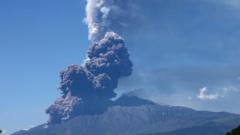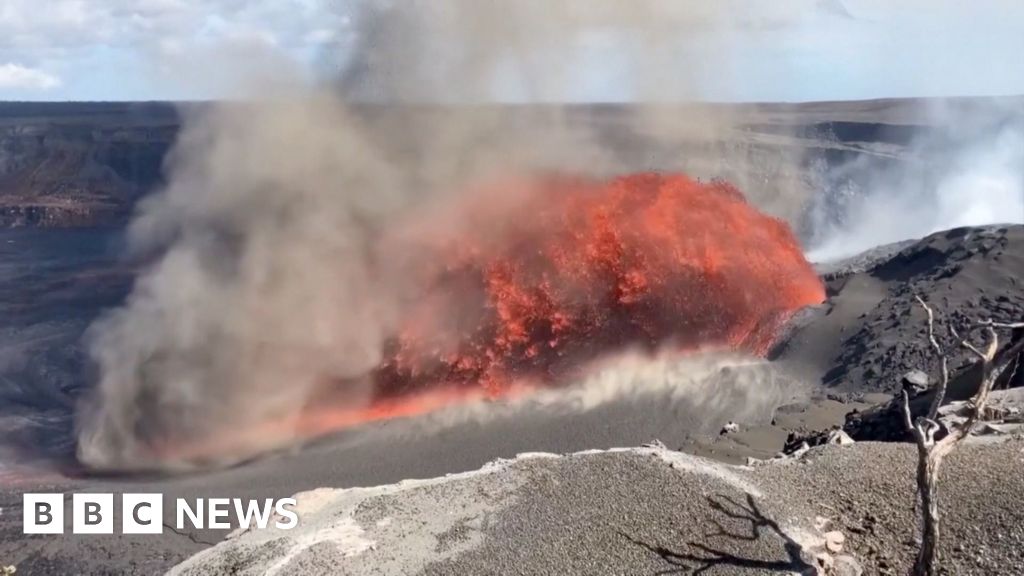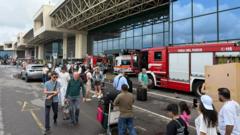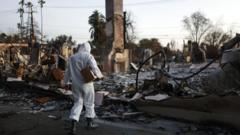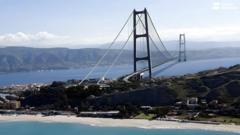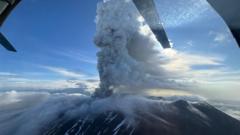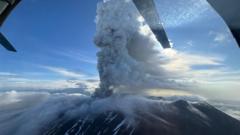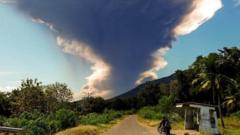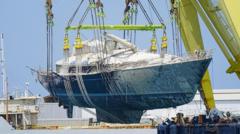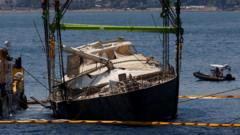The iconic Mount Etna in Sicily has erupted, releasing substantial plumes of ash and smoke into the atmosphere. Images and videos captured Monday morning revealed volcanic activity, with the National Institute of Geophysics and Volcanology (INGV) reporting explosions of increasing intensity during the early hours. Although the full effects of the eruption are still being assessed, initial reports suggest minimal disruption to surrounding areas.
Seismographic data indicated that this latest episode occurred on the southeastern flank of the volcano, near a recognized vent approximately 200 meters wide. Footage from the scene illustrates a rapid outflow of pyroclastic flow—a blend of ash, gas, and molten rock—streaming down the volcano's side, a phenomenon that can pose risks if it approaches populated regions. Geologists believe that the eruption might have been triggered by a partial collapse of the volcano’s crater.
The INGV has updated observers that, as of now, the volcanic materials have not advanced past the Valley of the Lion, a stopping point for tourists venturing towards the summit. The eruption was classified as a "Strombolian" event, which refers to intermittent explosions produced by gas within the magma chamber. Such occurrences can be akin to releasing gas from a carbonated beverage, leading to sudden and explosive material expulsion.
While high alert was issued earlier, leading to some flight disruptions in the vicinity, it was subsequently downgraded. The last notable eruption of Mount Etna, which occurred in February, resulted in significant ash clouds that diverted numerous flights at Catania airport. In light of the current eruption, authorities have advised tourists to steer clear of the lava flows as a precautionary measure.
Seismographic data indicated that this latest episode occurred on the southeastern flank of the volcano, near a recognized vent approximately 200 meters wide. Footage from the scene illustrates a rapid outflow of pyroclastic flow—a blend of ash, gas, and molten rock—streaming down the volcano's side, a phenomenon that can pose risks if it approaches populated regions. Geologists believe that the eruption might have been triggered by a partial collapse of the volcano’s crater.
The INGV has updated observers that, as of now, the volcanic materials have not advanced past the Valley of the Lion, a stopping point for tourists venturing towards the summit. The eruption was classified as a "Strombolian" event, which refers to intermittent explosions produced by gas within the magma chamber. Such occurrences can be akin to releasing gas from a carbonated beverage, leading to sudden and explosive material expulsion.
While high alert was issued earlier, leading to some flight disruptions in the vicinity, it was subsequently downgraded. The last notable eruption of Mount Etna, which occurred in February, resulted in significant ash clouds that diverted numerous flights at Catania airport. In light of the current eruption, authorities have advised tourists to steer clear of the lava flows as a precautionary measure.

